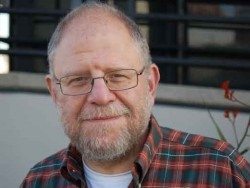

This morning L.A. Observed disclosed the death of its business editor and writer, Mark Lacter. LAO editor-in-chief Kevin Roderick reported that Lacter’s “wife, the author Laura Levine, told me that Mark suffered a stroke yesterday and could not survive the bleeding on his brain. He was 59 and died at Ronald Reagan UCLA Medical Center.”
A former Los Angeles Business Journal editor, Lacter was a regular commentator on radio station KPCC and also published in Los Angeles magazine. In 2005, he was named by the Society of Professional Journalists as Distinguished Journalist of the Year
Although Lacter would often infuriate Frying Pan News readers with his swipes at unions, he also railed against developers who were manipulating the government’s EB-5 visa program and, more notably, against the outlandish inequality between Los Angeles’ haves and have-nots.
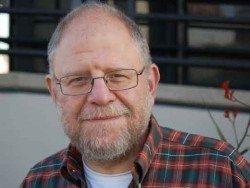

This morning L.A. Observed disclosed the death of its business editor and writer, Mark Lacter. LAO editor-in-chief Kevin Roderick reported that Lacter’s “wife, the author Laura Levine, told me that Mark suffered a stroke yesterday and could not survive the bleeding on his brain. He was 59 and died at Ronald Reagan UCLA Medical Center.”
A former Los Angeles Business Journal editor, Lacter was a regular commentator on radio station KPCC and also published in Los Angeles magazine. In 2005, he was named by the Society of Professional Journalists as Distinguished Journalist of the Year
Although Lacter would often infuriate Frying Pan News readers with his swipes at unions, he also railed against developers who were manipulating the government’s EB-5 visa program and, more notably, against the outlandish inequality between Los Angeles’ haves and have-nots.


At the National Employment Law Project (NELP), where we advocate for low-wage and unemployed workers, some of our most inspiring moments have come from being involved in campaigns where labor and the community work together for greater economic justice.
The recent passage of AB 218 — Assemblymember Roger Dickinson’s “ban the box” bill — was a shining example of the labor movement working in alliance with the community to expand economic opportunity to people hardest hit by unemployment. The unions, led by the California Labor Federation and SEIU Local 1000, were an essential partner to the powerful coalition that organized with NELP for more than two years to provide a second chance to the one in five Californians with a criminal record who struggle to find work. In addition to our partners that co-sponsored and led the charge organizing in support of the bill – PICO California,
» Read more about: New Law Eases Job Barriers for Former Prisoners »


On Sunday, November 3, the Los Angeles Times ran a 429-word story, “Wal-Mart kicks off Christmas way early, helping to kill Black Friday,” on the retail giant’s plan to entice customers to do their Christmas shopping early by marking down prices weeks before the traditional day-after-Thanksgiving bargains. Providing Walmart with tens of thousands of dollars of free advertising, the story reported that “Deals include 36 percent savings on a JVC 42-inch LED television and 51 percent savings on a 10-inch Xelio tablet — at $299 for the TV and $49 for the tablet, those are the lowest tags Wal-Mart has ever put on those products.” Surely this is the kind of “news” that a Walmart PR executive drools over.
In contrast, the Times’ coverage of last Thursday’s anti-Walmart protest — one of the largest local civil disobedience actions in the company’s history — garnered a puny 163-word story,
» Read more about: Missing in Action: L.A. Times Coverage of Walmart Arrests »
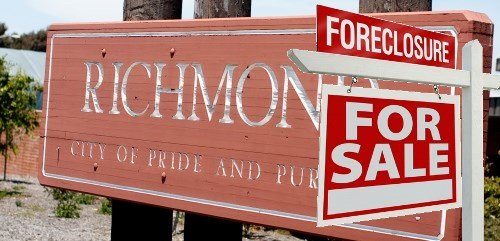

RICHMOND, Calif. – In a run-down shopping center in the heart of this San Francisco Bay Area community, about a half dozen activists are plotting to turn the housing market on its head.
Their aim: stem home mortgage foreclosures and preserve neighborhoods in a city hit hard by the housing bust. But, this time, the activists have some unusual allies.
They have enlisted officials from the city of Richmond and beyond. They’re working alongside a group of investors who stand to make a profit if the plan works. And they’re advocating government seizures.
Wait - seizing private property? Profiting from neighborhood preservation? Is this the Bizarro World? Well, sort of. But the way the activists see it, they’ve hit upon an idea that’s so counterintuitive, it just might work.
That idea involves eminent domain, the power of government to take private property for public purposes.
» Read more about: Richmond Considers Saving Troubled Mortgages »


In addition to serving as Senior Fellow for Health Care for the Roosevelt Institute | Campus Network, I am the Executive Director for my campus’ Roosevelt chapter. A few weeks ago at our general body meeting, I asked the crowd whether they had been talking with their friends about the Affordable Care Act and what these conversations sounded like. Did they know the basics: that in January, most Americans will be expected to either carry at least minimal insurance or pay an opt-out penalty? Do they know that they will be able to stay on their parents’ insurance until they are 26, if they so choose? Have they compared the prices of different options available for young adults versus the penalty?
The question meant to take up the first 10 minutes of our meeting turned into a full 40-minute discussion. As we scarfed down our pizza in true hungry college-student fashion,
» Read more about: Obamacare: Millenials Want Facts, Not Politics »
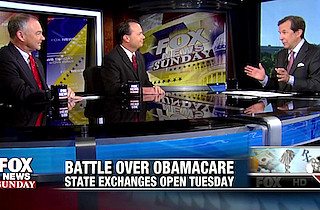
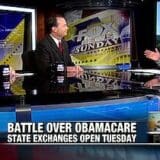
(Harold Pollack is the Helen Ross Professor of School of Social Service Administration at the University of Chicago. His post first appeared on The Nation‘s website and is republished with permission.) We’re six weeks into the implementation of one of the key provisions of the Affordable Care Act, the rollout of the healthcare marketplaces. It’s been a tough month, dominated by failures of rather astonishing proportions. But sooner or later, Healthcare.gov will work and Republican governors will grasp that bipartisan cooperation with the Obama administration is in their best interest. First, let’s acknowledge the failures. The most obvious occurred within the Obama administration itself, whose Department of Health and Human Services botched the launch of the online marketplace. For those of us who worked so hard over many years to secure passage of healthcare reform, this was humiliating. We argued for years that the individual and small-group insurance market required greater transparency,


“Thank you for your service.”
It’s a line we hear and say a lot around Veteran’s Day, especially in California, home to 1.8 million veterans, more than in any other state.
But if we really want to show gratitude for our veterans, then we need to do more than utter a simple “thank you.” We need to help these brave heroes find a middle-class life when they return from serving our country.
According to the Department of Veterans Affairs annual survey of veterans, jobs are the biggest concern for our returning veterans and for good reason — the unemployment rate for veterans of recent conflicts is an unacceptable 10 percent and 1.5 million young veterans – many with families to support — currently live under the poverty line.
It hasn’t always been like this. According to Nick Berardino, Vietnam Veteran and General Manager of the Orange County Employees Association:
“When we came back from Vietnam,
» Read more about: Labor Initiative to Help Struggling Veterans »


More than any other public policy issue, health care is very personal. So it is not surprising that personal stories are a central battleground for the public perception of the Affordable Care Act. And it is increasingly clear that this battle will be fought through the prisms of class and race.
The Affordable Care Act (ACA) would not have become law if it were not for the willingness of survivors of the nation’s health care mess – people who had lost loved ones, fought to get care after an insurance company denial, faced crippling medical costs – to tell their stories to members of Congress and the press. Many members of Congress voted for the bill, despite the political risk, because they were moved by personal encounters with constituents with compelling stories. Many of the most effective spokespeople during the legislative battle over the law were people whose lives and livelihoods had been threatened by our defective health coverage system.
» Read more about: Halloween’s Over But Media’s Obama-scare Stories Persist »


So how to explain this paradox?
As of November 1 more than 47 million Americans have lost some or all of their food stamp benefits. House Republicans are pushing for further cuts. If the sequester isn’t stopped everything else poor and working-class Americans depend on will be further squeezed.
We’re not talking about a small sliver of America here. Half of all children get food stamps at some point during their childhood. Half of all adults get them sometime between ages 18 and 65. Many employers – including the nation’s largest, Walmart – now pay so little that food stamps are necessary in order to keep food on the family table and other forms of assistance are required to keep a roof overhead.
The larger reality is that most Americans are still living in the Great Recession. Median household income continues to drop. In last week’s Washington Post-ABC poll,
» Read more about: Congress: Safety Nets Are Made for Shredding »
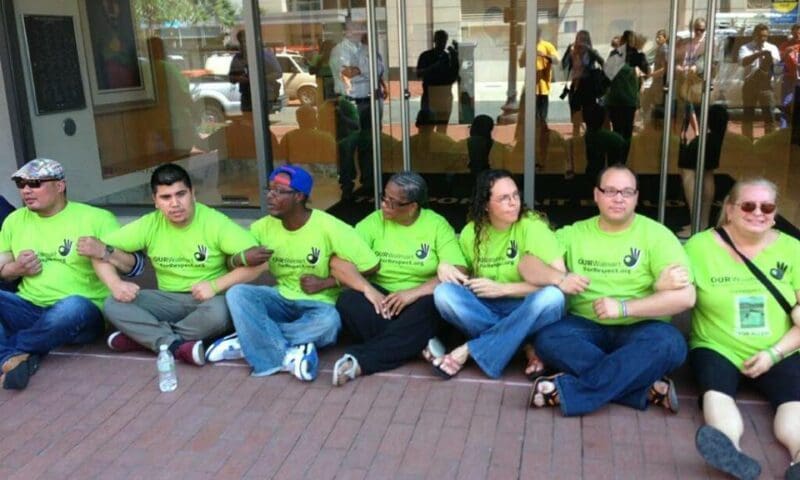
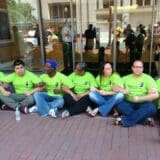
Apparently Walmart, the country’s largest — and, some say, stingiest — private employer thought its troubles at the new Chinatown grocery center were over once it opened for business in September. That, however, was corporate wishful thinking in serious need of a cleanup in aisle three. Today, November 7, the community coalition that opposed Walmart’s original entry into the historic neighborhood will be demonstrating against the mega-chain’s continued abuse of its low-paid employees. The event will culminate with the arrest of 100 men and women in front of the store.
Their immediate goal is to draw attention to Walmart’s strategy of maximizing profits by scheduling its workers for the minimum number of hours possible and by encouraging them to apply for food stamps and other tax-funded programs to supplement their meager paychecks. (Not to mention firing dissident workers.) But organizers also hope to build momentum for nationwide protests against Walmart scheduled to take place in three weeks.
» Read more about: Walmart Civil Disobedience Planned for November 7 »


Seven years ago, the Coalition for Clean and Safe Ports came together with one simple goal: to fix the broken port trucking system. For too long, port trucking had been a case study in market failure: The trucks spewed emissions that killed three area residents each week; a fragmented, inefficient market led to delays for cargo interests; and truck drivers had among the lousiest jobs around. So we came together – environmentalists, faith leaders, immigrant rights groups, union organizers and others – and worked with the Port of Los Angeles to develop what became the award-winning Clean Truck Program (CTP).
We’ve made great strides toward some of our goals. The entire fleet of about 12,000 trucks has turned over. No more 60-year-old trucks in service (no joke!). All trucks have cleaner engines and truck emissions have decreased an estimated 80 to 90 percent. Residents around the port – and along major trade freeways like the 710 – are breathing better and we’re making a real dent in children’s asthma,


There are good reasons why President Obama’s leading message on health care during the 2008 campaign, often repeated since, was “if you like your health insurance, you can keep it.” That message was created to overcome the fear-mongering that had blocked legislative efforts to make health care a government-guaranteed right in the United States for a century.
Our health is of central importance to our lives, deeply personal to our well-being and those of our loved ones. That concern has translated politically; for decades, people have told pollsters that health care is a top concern. It is why every 15 to 20 years – from 1912 to 2008 – the nation has returned to a discussion about whether and how the government should guarantee health coverage, the debate rising phoenix-like from one spectacular defeat after another. A big reason for those defeats has been that opponents have exploited those deep feelings to scare the public about proposed reforms.
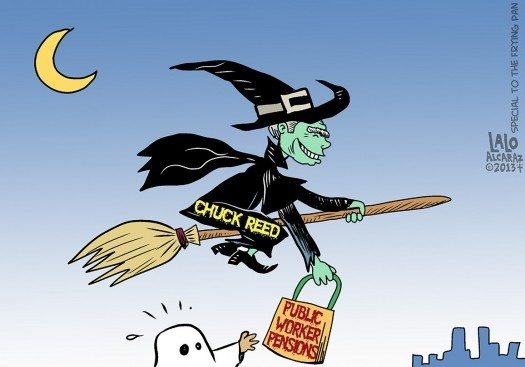

Last week San Jose Mayor Chuck Reed delivered his usual speech about the benefits of slashing the retirement benefits of his city’s public employees – and why he is now pushing for a statewide ballot measure that could dramatically change the lives of hundreds of thousands of Californians. Reed’s initiative – which he characterizes as a bipartisan effort and which hasn’t yet qualified for the 2014 ballot — would allow the state and local governments to reduce retirement benefits for current employees for the years of work they perform after the measure’s changes go into effect. What was not usual about Reed’s speech was its setting: The Roosevelt Hotel in New York City, 3,000 miles from California.
Reed was a keynote speaker at a “Save Our Cities” conference sponsored by the Manhattan Institute, a conservative think tank co-founded by Ronald Reagan’s CIA director, William Casey.
» Read more about: Pension Cutters: Bipartisan Slogans, Right-Wing Money »


In terms of the math, figuring out who will be affected in the country will be easy. Just walk outside and count the first seven people on the street – and then remember one of them.
What might be harder is the realization that less does not mean more when it comes to families and individuals experiencing poverty and needing food to survive, especially during the coming cold months.
An estimated 47.6 million people in the country will see a total of $5 billion in across-the-board cuts in food stamp support, officially starting Friday, because a 2009 law that supported a boost in assistance will lapse, according to a report from the Center on Budget and Policy Priorities.
While a family with three people will see a $29 monthly cut in the safety net program, a family with four people will face a $36 monthly reduction, the Washington,
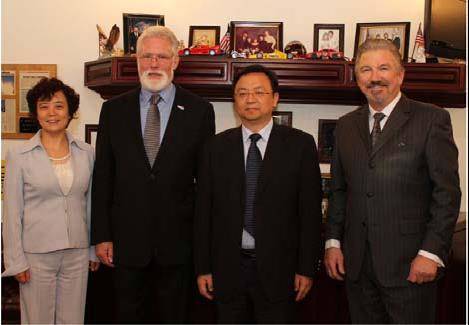

(Note: A Halloween-themed rally will take place Thursday, October 31, 11:30 a.m.-12:30 p.m., outside BYD’s office, 1800 S. Figueroa St. (at W. 18th St.), downtown Los Angeles.)
It was with great excitement that California elected officials welcomed the Chinese company Build Your Dreams (BYD) to build electric buses in places like Lancaster, Long Beach and Los Angeles. Hopes were high that BYD’s Zero Emissions buses would clean the air, and hundreds of Angelenos would go to work in BYD’s new downtown Los Angeles office, earning paychecks to support their families.
But this weekend, news reports revealed that the company’s promises of jobs and quality products couldn’t be more hollow. The California Department of Industrial Relations issued BYD numerous citations on October 10, fining the company $79,250 and requiring it to pay $20,000 in back wages to 22 employees.
City officials, according to the Los Angeles Times,
» Read more about: ‘Build Your Dreams’ Company a Nightmare for Workers »
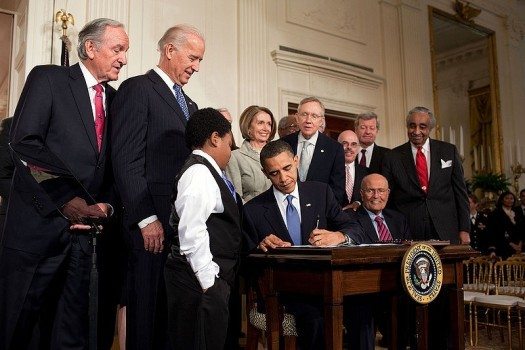
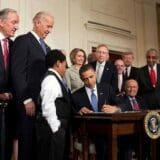
Republicans may not have succeeded in defunding the nations’ newest social insurance program, Obamacare, but they now are aiming at the foundational programs, Social Security and Medicare. And this time, they’ll have the President on their side. It would be a mistake for progressives to assume that a grand budget bargain will fall apart once again, even if that remains likely. Instead, we need to turn the debate from cutting social insurance to strengthening both the finances and benefits of both big retiree programs. The best way to do that is by championing simple, bold solutions.
In his post shutdown press conference, President Obama repeated his call for changes in Social Security and Medicare. His 2014 budget included cuts to benefits for both. That aligns him with House Speaker John Boehner, who called for savings in Social Security and Medicare during the shutdown battle. Senators from both parties have shown their willingness to support benefit cuts as part of a big budget deal.
» Read more about: Saving Medicare, Social Security: Block That Grand Bargain! »


This week marks the first anniversary of Hurricane Sandy, which one year ago tore a path of destruction through much of New York and New Jersey. While media coverage will no doubt focus on the images of nature wreaking havoc on the Eastern Seaboard, we would do well to look at the very human failings that contributed to the damage and suffering inflicted by Sandy.
A good place to start is the practices of companies like ConEdison, the utility giant responsible for electrical and gas service for much of the region. Like other utilities across the country, ConEdison has made significant cuts to its staff over the past several years, while using outside contractors to fill the gaps. In normal times, these cuts lead to unnecessary service delays and interruptions that inconvenience consumers. In a time of crisis, however, understaffing has much more serious consequences.
The overall impact of Sandy was staggering.
» Read more about: Hurricane Sandy: The Price of Deregulation »
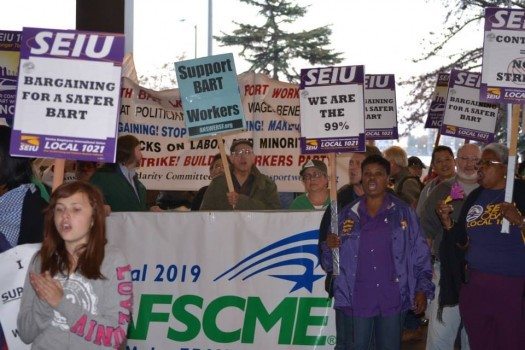
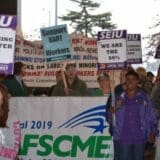
On Friday, BART [Bay Area Rapid Transit] employees at SEIU and ATU will likely ratify the deal negotiated last week and the following day BART’s Board of Directors will likely vote to approve it. Apart from a few crazies on both the left and right who were hoping that the strike or the dispute kept going, most of us BART riders will be extremely glad that it is finally over and hoping that we never have to go through this again. It’s not surprising, therefore, that some politicians have attempted to exploit public frustration. Orinda Councilman Steve Glazer, who is running for the California Assembly, has tirelessly promoted his campaign for change in state law to ban strikes by BART workers. It’s an easy time to call for coercive legislation but a strike ban is the wrong solution for the Bay Area and it wouldn’t work.
Are BART Workers Strike–
» Read more about: Banning BART Strikes Is No Answer to Labor Disputes »
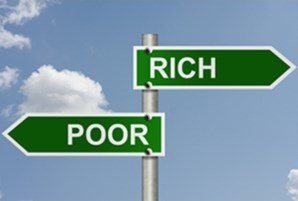

Rich and poor — two sides of the same coin. That “coin” meaning money and how much you have. While Americans seem to love money and idolize those who possess it, having it isn’t so good for you. That’s right. Not only does money not buy happiness, it can be downright hurtful to those who are rich, as well as the rest of us.
For years I have noticed that BMW drivers tend to cut people off and generally drive with an attitude of arrogance toward others. Now some recent studies demonstrate that I am not just seeing things. People with more expensive cars drive as though they’re entitled to cut people off at intersections or whip by on the right.
The rich also prefer to play and work alone – distancing themselves from others. But you don’t have to actually be rich to act like that.